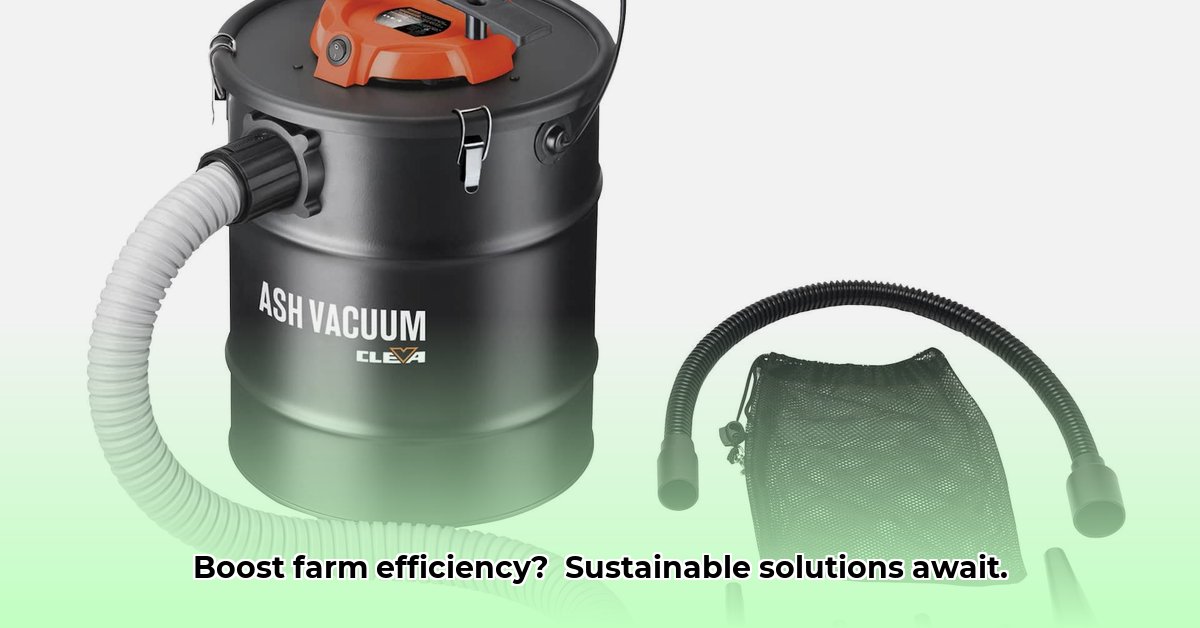
Understanding Ash Vacuum Tractors in Sustainable Agriculture
Cleaning up after harvesting or other farm operations can be time-consuming and labor-intensive. Ash vacuum tractors offer a more efficient and environmentally friendly solution for managing large quantities of biomass, including crop residue, wood ash, and other debris. These powerful machines significantly reduce manual labor, improve overall farm efficiency, and potentially minimize the environmental impact of agricultural practices. This article provides a comprehensive guide to understanding ash vacuum tractors, their applications, and how to choose and implement them effectively on your farm. For more information on tractor attachments, check out this helpful resource: Tractor Attachments.
Types of Ash Vacuums for Diverse Farm Needs
Ash vacuum tractors vary in size, capacity, and features to suit different farm sizes and biomass types. Small-scale operations may benefit from smaller, more maneuverable models, while larger farms or bioenergy facilities may require high-capacity tractors capable of handling substantial volumes. Factors like the volume of biomass produced, material types, and farm layout influence the choice of equipment. Key specifications to consider include suction power (measured in horsepower or amps), canister size (in gallons), and heat resistance (crucial for handling hot ash). Researching various models and specifications is crucial for informed decision-making. Specialized agricultural models often integrate features optimizing ash handling for specific crop residues and conditions.
Benefits of Implementing Ash Vacuum Tractors
The advantages of using ash vacuum tractors extend beyond faster cleanup. They offer significant cost savings by dramatically reducing labor costs and downtime. This translates to better resource allocation across other farm operations. Efficient removal of biomass also minimizes waste, potentially reducing the farm’s environmental impact through lowered fuel consumption and reduced emissions associated with traditional disposal methods. Furthermore, reduced downtime contributes to improved overall productivity and allows for a faster turnaround between farm activities.
Challenges and Considerations for Ash Vacuum Tractor Adoption
While numerous benefits exist, challenges must be acknowledged. The initial investment cost for ash vacuum tractors can be substantial, necessitating a thorough cost-benefit analysis before purchase. Another major consideration is ash disposal. A comprehensive plan must be devised to ensure responsible and compliant disposal or even, if feasible, beneficial reuse of collected ash (e.g., as soil amendment). Regular maintenance, including servicing, parts replacement, and potential repairs, also adds to ongoing expenses. Finally, operator safety is paramount, requiring proper training and adherence to strict safety protocols to prevent accidents.
Step-by-Step Guide to Choosing and Utilizing an Ash Vacuum Tractor
This section provides a structured approach to successfully integrating ash vacuum tractors into your farming operations:
- Assess Your Needs: Accurately estimate the annual volume and type of biomass your farm generates to determine the appropriate tractor capacity. Consider seasonal variations.
- Conduct Thorough Research: Explore models from different manufacturers, comparing features, capacities, and suitability to your farm’s specifics. Consult specifications and customer reviews.
- Calculate Return on Investment (ROI): Develop a financial model including initial costs, maintenance, labor savings, and potential environmental cost reductions to assess long-term economic viability.
- Ensure Regulatory Compliance: Research and comply with all local, regional, and national regulations pertaining to ash and biomass handling and disposal. Obtain necessary permits.
- Prioritize Operator Safety: Provide comprehensive training to operators, emphasizing safe operation protocols and emergency procedures. Implement regular safety audits.
- Develop an Ash Disposal Plan: Create a detailed plan for responsible ash disposal or reuse, complying with environmental regulations and exploring options for beneficial reuse.
- Monitor and Adapt: Continuously monitor the tractor’s performance and its impact on your farm’s operations and the environment. Be prepared to adjust practices as needed.
Case Studies (Future Addition)
This section will feature successful ash vacuum implementations in sustainable agriculture, showcasing benefits and lessons learned. (Data pending)
Future Directions in Ash Vacuum Technology
Ongoing research and technological advancements promise to improve energy efficiency, sustainability, and performance of ash vacuum tractors. Future innovations may include eco-friendly materials, more automation, and improved waste management techniques. The potential for further reducing environmental impact and enhancing operational efficiency is significant.
Conclusion: Embracing Sustainable Practices with Ash Vacuum Tractors
Ash vacuum tractors offer a compelling path towards more sustainable and efficient agricultural practices. While initial investment and ongoing maintenance present considerations, the potential for considerable labor cost reduction, improved productivity, and minimized environmental impact makes them an attractive option for many farms. Careful planning, thorough research, and a commitment to safe operation are key to realizing these benefits. Further research and case studies will continue to illuminate the long-term impacts of this technology in shaping a more environmentally conscious agricultural landscape.